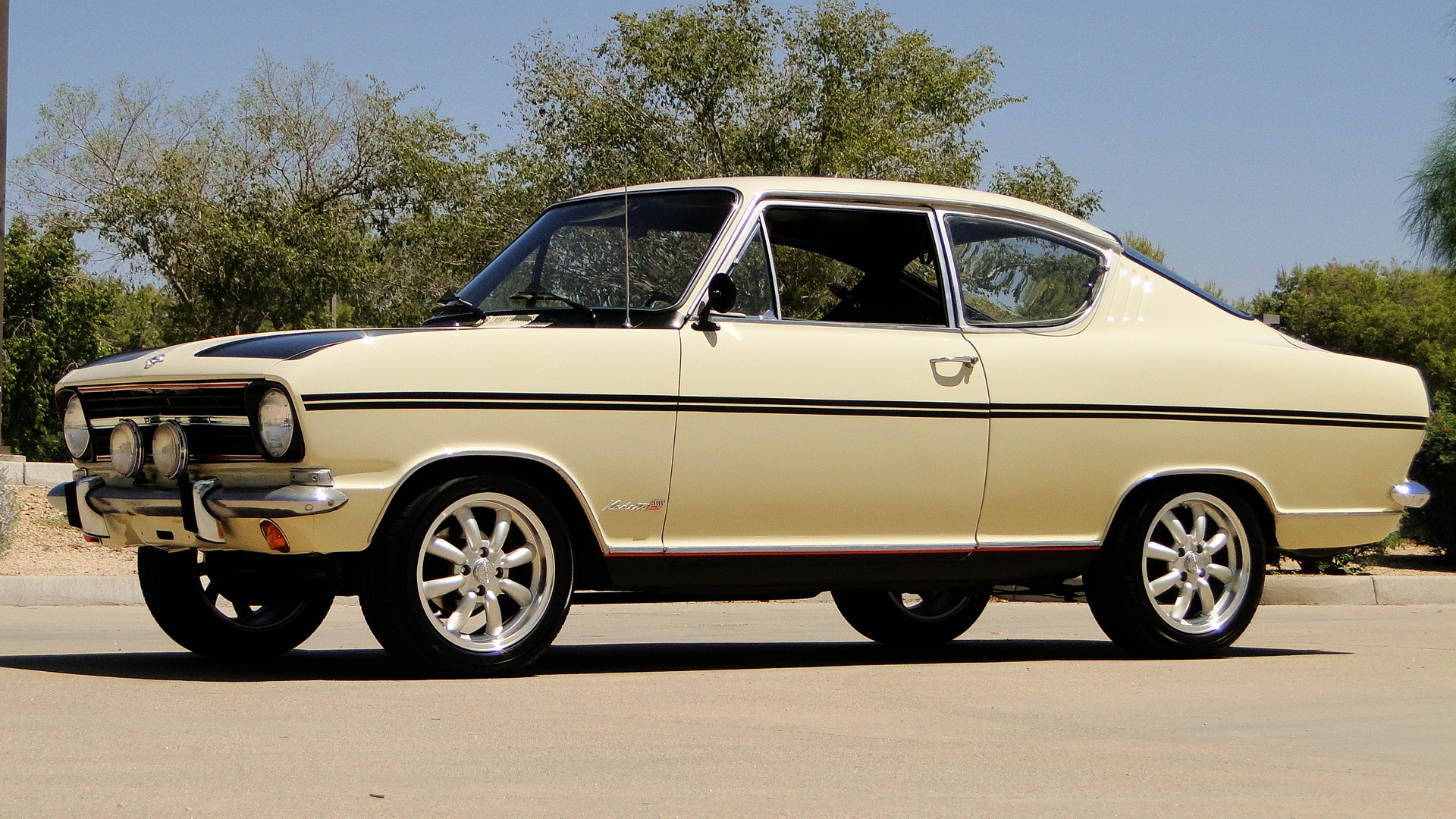
Ask any American to name an Opel product, and they’re overwhelmingly likely to name the GT — often known as the “Baby Corvette” that arrived in America in 1969.
But few could tell you that General Motors bought most of Opel in 1929 — and took complete ownership in 1931. By the end of the 1930s, Opel was the second-biggest automaker in Germany. Relations with the parent corporation were severed during the World War II years, but after 1945, Opel came right back to building cars for GM in the European market.
GM and Opel began importing cars to the United States in the late 1950s, and by the mid-1960s, Opel had developed a new small car with an old name: Kadett. The original Kadett was a small, affordable car, but the Russians confiscated all the tooling after the war. Keeping the tradition, the new Kadett was a compact coupe, sedan or wagon, and the line became part of the growing wave of small imports. It’s fair to say that the 1964 Kadett gave Opel its first strong foothold in America, and that the 1967 Opel Kadett Rallye was the best of that breed.
A hot-rod Kadett
The 1967 Opel Kadett Rallye was a special mid-year edition available only as a 2-door fastback coupe. The Rallye was gifted with a special version of Opel’s standard 1.1-liter engine, with compression raised up to 9.2:1 from the stock 7.8:1, and fitted with dual Solex carburetors and a twin exhaust. The result was a 67-horsepower hot rod — as compared with the stock 54-horsepower plant.
The Rallye also received a fully synchronized 4-speed manual transmission, power front disc brakes, upgraded suspension, and rally lights mounted in the grille. Inside, the Rallye featured a special wood grain-plastic steering wheel and extra gauges. To set the Rallye off visually, larger wheels with radial tires and rally stripes were included. With a curb weight of just 1,719 pounds and a sticker price of $2,192, the Rallye was quite attractive.
For 1968, Opel dropped the 1.1-liter engine from the Rallye, and the car was available with the 1.5-liter engine at 80 horsepower, or an optional 1.9-liter engine at 102 horsepower. The 1.1-liter engine returned in 1969 and 1970, and it was available alongside the 1.9-liter. Beginning in 1969, buyers could also order a 3-speed automatic transmission. The other features of the Kadett Rallye remained the same. For 1971 and 1972, the 1.1-liter engine was again dropped, and the new car was called an Opel Kadett 1900 Rallye.
A European sports car
Among all the Kadetts, enthusiasm is strongest for the 1967 Rallye coupe. The 1.1-liter engine offers a pure European driving experience, similar to the 1,300-cc Alfa Romeos. But prices have languished, as the cars were not seen as collectible. Opel enthusiasts kept the flame alive, however, and there are still a reasonable number of cars available.
The subject car for this article recently set a new high-water mark for the model at a total price (including premium) of $21,450 at the Barrett-Jackson Las Vegas sale in September 2014. But the seller had proof of over $20,000 in restoration expenses, not including the purchase price of a car with 56,782 original miles, so this was certainly not a profitable sale even if it is the highest recorded.
Comparable auction records are nearly nonexistent, and the Rallye is not listed in the SCM Pocket Price Guide. One nicely restored example fetched a high bid of $18,600 on eBay recently, while the other half-dozen that have crossed the electronic auction block over the past several years sold for a small fraction of that bid.
The bottom line on the Opel Kadett Rallye is that you can pick up a decent example for well under $10,000 — and the best example in the world for double that. Whether those numbers will rise in the future is a wild guess, but it seems most likely that the Opel Kadett Rallye will remain an affordable classic for the foreseeable future. ♦
